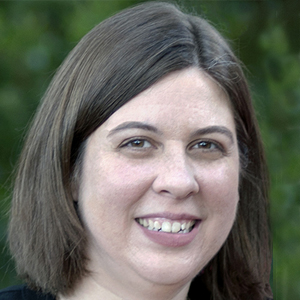Study suggests that estrogen may drive nicotine addiction in women
A newly discovered feedback loop involving estrogen may explain why women might become dependent on nicotine more quickly and with less nicotine exposure than men. The research could lead to new treatments for women who are having trouble quitting nicotine-containing products such as cigarettes.
Sally Pauss is a doctoral student at the University of Kentucky College of Medicine in Lexington. She led the project.

“Studies show that women have a higher propensity to develop addiction to nicotine than men and are less successful at quitting,” said Pauss, who is working under the supervision of Terry D. Hinds Jr., an associate professor. “Our work aims to understand what makes women more susceptible to nicotine use disorder to reduce the gender disparity in treating nicotine addiction.”
The researchers found that the sex hormone estrogen induces the expression of olfactomedins, proteins that are suppressed by nicotine in key areas of the brain involved in reward and addiction. The findings suggest that estrogen–nicotine–olfactomedin interactions could be targeted with therapies to help control nicotine consumption.
Pauss will present the research at Discover BMB, the annual meeting of the American Society for Biochemistry and Molecular Biology, which will be held March 23–26 in San Antonio.
“Our research has the potential to better the lives and health of women struggling with substance use,” she said. “If we can confirm that estrogen drives nicotine seeking and consumption through olfactomedins, we can design drugs that might block that effect by targeting the altered pathways. These drugs would hopefully make it easier for women to quit nicotine.”
For the new study, the researchers used large sequencing datasets of estrogen-induced genes to identify genes that are expressed in the brain and exhibit a hormone function. They found just one class of genes that met these criteria: those coding for olfactomedins. They then performed a series of studies with human uterine cells and rats to better understand the interactions between olfactomedins, estrogen and nicotine. The results suggested that estrogen activation of olfactomedins — which is suppressed when nicotine is present — might serve as a feedback loop for driving nicotine addiction processes by activating areas of the brain’s reward circuitry such as the nucleus accumbens.
The researchers are now working to replicate their findings and definitively determine the role of estrogen. This knowledge could be useful for those taking estrogen in the form of oral contraceptives or hormone replacement therapy, which might increase the risk of developing a nicotine use disorder.
The investigators also want to determine the exact olfactomedin-regulated signaling pathways that drive nicotine consumption and plan to conduct behavioral animal studies to find out how manipulation of the feedback loop affects nicotine consumption.
Sally Pauss will present this research during a poster session from 4:30–6:30 p.m. CDT on Monday, March 25, in the exhibit hall of the Henry B. González Convention Center (Poster Board No. 152) (abstract).
Enjoy reading ASBMB Today?
Become a member to receive the print edition four times a year and the digital edition monthly.
Learn moreGet the latest from ASBMB Today
Enter your email address, and we’ll send you a weekly email with recent articles, interviews and more.
Latest in Science
Science highlights or most popular articles

Defining a ‘crucial gatekeeper’ of lipid metabolism
George Carman receives the Herbert Tabor Research Award at the ASBMB Annual Meeting, March 7–10, just outside of Washington, D.C.

The science of staying strong
Muscles power every movement, but they also tell the story of aging itself. Scientists are uncovering how strength fades, why some species resist it and what lifestyle and molecular clues could help preserve muscle health for life.

Bacteriophage protein could make queso fresco safer
Researchers characterized the structure and function of PlyP100, a bacteriophage protein that shows promise as a food-safe antimicrobial for preventing Listeria monocytogenes growth in fresh cheeses.

Building the blueprint to block HIV
Wesley Sundquist will present his work on the HIV capsid and revolutionary drug, Lenacapavir, at the ASBMB Annual Meeting, March 7–10, in Maryland.

Gut microbes hijack cancer pathway in high-fat diets
Researchers at the Feinstein Institutes for Medical Research found that a high-fat diet increases ammonia-producing bacteria in the gut microbiome of mice, which in turn disrupts TGF-β signaling and promotes colorectal cancer.

Mapping fentanyl’s cellular footprint
Using a new imaging method, researchers at State University of New York at Buffalo traced fentanyl’s effects inside brain immune cells, revealing how the drug alters lipid droplets, pointing to new paths for addiction diagnostics.

